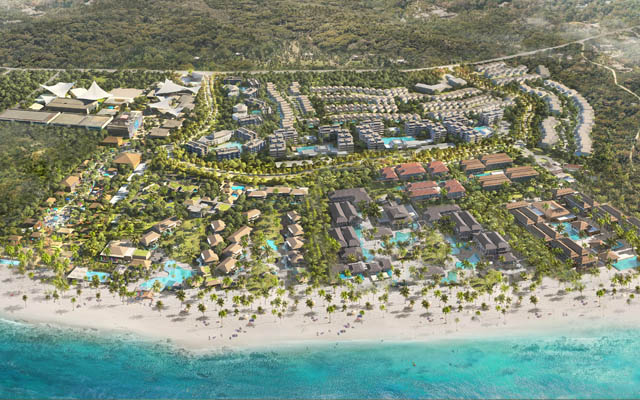A 25 billion pesos (US$545 million), 50-hectare mixed-use development that marks sustainability, community and local culture as its guiding principles is taking shape in Panglao, Bohol.
Named Panglao Shores, Bohol’s first and biggest township will feature at least three hotels with 1,000 keys on a kilometre strip of white beach; 1,000 condominium and residential units; 37,000m² of indoor and outdoor retail and commercial areas; as well as medical facilities and vast greenbelt areas, said CEO Hope Marie Uy at the recent media launch.

Developed by the Alturas Group of Companies, owned by the Uy family, the first phase of the 10-year project includes the commercial strip and the ongoing construction of 188-key South Palms Resort to be managed by a foreign hotel management company when it opens early next year. The latter is an expansion of the existing 78-key South Palms Resort.
Uy also added that the addition of a mid-range hotel with around 300 keys and function venues for up to 1,000 people would fill the need for a larger business events facility in Bohol. There will also be a luxury resort with villas and exclusive areas.
Panglao Shores will not be a cookie-cutter project, Uy shared, as the company has engaged environmental specialists from London, Singapore, Thailand and the Philippines from the onset. The company will also ensure that the development will be a fully-integrated community that will flourish with sustainability, as inspired by the company’s existing South Farms which is focused on sustainability and the circular economy.
Project consultant Bill Barnett, managing director of C9 Hotelworks, said Panglao Shores is a “generational business” meant to be sustainable in all aspects, including water supply and electricity, coupled with a sense of place and connection to the land.
Buildings will be low density – maximum heights will be kept to four or five storeys – for ocean views, designed according to international eco-building standards and materials, and building materials and plants will be sourced locally. The architecture will also be guided by the principles of Filipino vernacular design, natural ventilation, and the use of locally-available materials such as limestone and repurposed wood, which is readily available in Bohol.




















